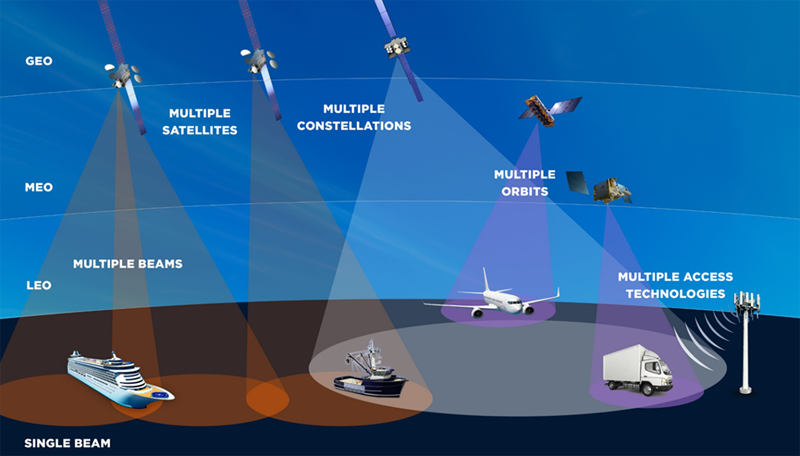By Andrew Faiola, Head of Mobility
When people talk about the satellite industry, most of the time we hear about the ‘glamorous’ bit. We hear about the satellites, the rockets that get them to space, we see the images of the shiny solar arrays and the incredible location that they occupy up looking down on the Earth. But there’s another, critically important side to space, and that’s what happens on the ground – and that is just as exciting.
When I first joined what was then Newtec a little over a year ago, it didn’t take me long to learn how different the ground segment side of the business was to the space segment side of the business.
Whereas satellite operators have to plan for long-term missions, designing and operating spacecraft that can be as flexible as possible, a satellite is still an in-orbit asset where the lifetime is measured in years, if not decades, and where there is not yet much that can be done to fundamentally change it once in orbit. On the ground, we have the ability to be agile, to move faster, to help satellite operators and service providers get the most out of those assets by working together.
At ST Engineering iDirect, we are building a next generation platform to enable the world’s most advanced ground capabilities. In our industry, and especially in Mobility, we are going to be part of a converged telco/5G environment.
We believe that 5G will dramatically change how satellite is integrated to achieve full interoperability within the end-to-end 5G network. This creates the ultimate opportunity for the satellite industry to break out of its niche and for satellite service providers to offer a much wider range of services and empower end users anywhere in the world with consistent, reliable, high-performance experiences.
A key objective of our development program is to integrate with telcos and enterprises. We are architecting our infrastructure in compliance with 5G to assure compatibility with 5G terrestrial networks. One goal is connecting our hubs to the Cloud. Another is meeting terrestrial standards for transport systems so that a service provider can easily connect through the transport layer.
In order to expand the market and enable connectivity for those who have none, don’t have enough, or can’t afford it, we need to be able to bring together multiple networks into a seamless whole. This means traditional GEO satellites; it means NGSO satellites; it means terrestrial communications networks from Wi-Max to all the “Gs” and being able to deliver a user experience that is exceptional in terms of coverage, access, and availability.
We will do this by:
- Enabling the best business case for satellite service delivery in a converged telco world
- Delivering a 100% seamless user experience without compromises
- Empowering an ecosystem to enable new applications and revenue streams, and
- By assuring service delivery that offers unmatched flexibility, operational simplicity, and scalability.
It may be true that in years past, people went to sea to get away from it all. This is no longer the case. Young seafarers going to sea today are digital natives. They have grown up being connected. When going out on a merchant vessel or fishing boat for weeks or months at a time means leaving family and friends behind, it can be a very isolating feeling. Being able to provide connectivity to even the smallest or most distant vessels can really mean the difference between life and death. We can’t forget that.
